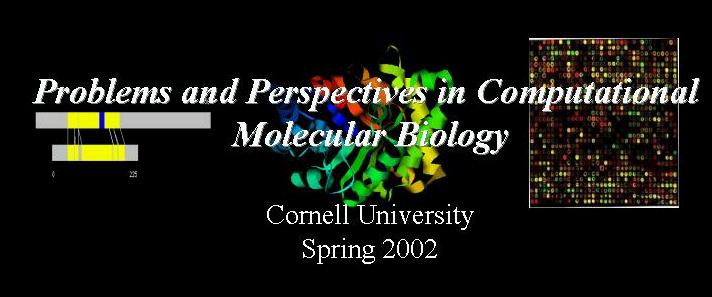
Problems and Perspectives in Computational Molecular Biology
Cornell UniversitySpring 2002

(1) Correlated mutations contain information about protein-protein interaction. abstract, paper (2) Coevolving Protein Residues: Maximum Likelihood Identification and Relationship to Structure. abstract, paper (3) Co-evolution of Proteins with their Interaction Partners. abstract, paper
Previous presentations and presentation files (Fall 2001)
1 credit, S/U only.
Prerequisites: Permission of instructor.
The seminar is required from students of the Computational Molecular
Biology Program.
After a successful fall semester, we decided to continue in a similar format. In each topic we will select one or two representative papers that made significant advances in this field. The lectures will be given by faculty and students. The seminar is open to all from the life sciences, computational sciences, and the physical sciences. We will try to bridge these disciplines by pairing students/faculty from complementary backgrounds. The topics that will be covered in the spring 2002 semester: